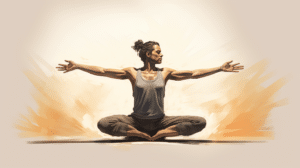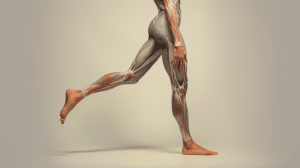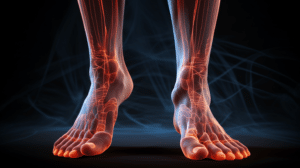Active Isolated Stretching (AIS) is a form of stretching that creates tension in the connective tissue, resulting in increased range of motion (ROM) and improved athletic performance. AIS is based on the myotatic reflex, which is a reaction that occurs when a muscle is stretched and contracts in response. AIS is designed to stretch the muscle similarly, stimulating the myotatic reflex and increasing ROM quickly and safely. Unlike static stretches, AIS does not produce the same amount of lactic acid buildup, which can lead to injury and poor athletic performance.
AIS is beneficial to athletes in many ways. It can prevent plantar fasciitis, improve range of motion, increase strength and muscle growth, and improve athletic performance. Additionally, AIS can have acute effects on the body, such as improved flexibility and daily living. It can also be used as passive stretching, benefiting muscle recovery and maintenance.
Overall, Active Isolated Stretching has many beneficial effects and should be considered by athletes as an effective way to improve their performance. It is important to note that AIS should be done correctly and cautiously, as it can be dangerous. Additionally, AIS should be combined with other forms of stretching, such as dynamic stretching and strength training, to maximize its benefits.
Key Takeaways
- Active Isolated Stretching (AIS) prevents injuries and reduces soreness levels.
- AIS improves posture, releases tension, and increases energy levels.
- AIS uses the myotatic reflex to increase the range of motion and mobility.
- AIS benefits athletes, pregnant women, individuals with arthritis or multiple sclerosis, and anyone seeking to increase flexibility and range of motion.
Understanding the Concept of Active Isolated Stretching
 Active Isolated Stretching (AIS) is a patented stretching technique developed by kinesiologist Aaron Mattes that increases flexibility and decreases pain without the risk of injury. This method is based on reciprocal innervation, allowing muscles to be stretched and released quickly, giving them time to rest between stretches. AIS can help improve muscle flexibility and range of motion and reduce soreness, inflammation, and tension. The key to this technique is to hold each stretch for only two seconds to avoid triggering the myotatic reflex, which causes muscles to recoil when stretched too far or too long.
Active Isolated Stretching (AIS) is a patented stretching technique developed by kinesiologist Aaron Mattes that increases flexibility and decreases pain without the risk of injury. This method is based on reciprocal innervation, allowing muscles to be stretched and released quickly, giving them time to rest between stretches. AIS can help improve muscle flexibility and range of motion and reduce soreness, inflammation, and tension. The key to this technique is to hold each stretch for only two seconds to avoid triggering the myotatic reflex, which causes muscles to recoil when stretched too far or too long.
The benefits of AIS include improved posture, increased energy levels, reduced fatigue, better circulation, and enhanced performance in physical activities such as sports or exercise routines. It also helps athletes prevent injuries from occurring due to overuse or overexertion. Additionally, individuals with chronic conditions such as arthritis or multiple sclerosis may benefit from this stretching technique since it reduces pressure on sensitive joints and muscles while improving blood flow throughout the body.
At Stretch Zone studios worldwide, highly trained experts are available to assist individuals with stretching exercises tailored to their needs. They offer stretches, such as single-leg pelvic tilt or hip adductor pull, that maximize one’s potential while avoiding lactic acid buildup through proper rest and nutrition. The experienced practitioners at Stretch Zone are passionate about helping people discover how active isolated stretching can drastically improve their lives.
The Role of Myotatic Reflex in Active Isolated Stretching
The myotatic reflex is a critical component of active isolated stretching, as it allows for an increased range of motion and mobility while preventing injury. Developed by Aaron L. Mattes, AIS utilizes the myotatic reflex to reduce pain and increase flexibility. This reflex is activated when a muscle is stretched too far or too long, which causes the power to recoil to prevent injury. By adhering to AIS principles, such as holding stretches for two seconds only, dynamic stretching can be used for injury prevention, flexibility training, and enhancing mobility without overexertion of muscles.
Additionally, regular stretching sessions help with muscle recovery after strenuous activities and provide numerous benefits, like improved posture and reduced tension. AIS also takes advantage of this reflex, which allows individuals to experience a more excellent range of motion than traditional or static stretching methods without risking an injury. Therefore, understanding the role of myotatic reflex in active isolated stretching can help anyone reap its full benefits, such as enhanced performance in sports, improved posture, and increased energy levels.
Preventing Lactic Acid Buildup With Active Isolated Stretching
Active Isolated Stretching (AIS) is a form of neuromuscular facilitation that has been proven to benefit flexibility, muscle strength, and daily living activities. AIS involves stretching the muscles briefly while focusing on muscle performance benefits and activating the myotatic reflex to prevent injury. The principles of AIS include holding each stretch for two seconds, avoiding overexertion, and resting for proper recovery.
injury. The principles of AIS include holding each stretch for two seconds, avoiding overexertion, and resting for proper recovery.
Several studies have been conducted on the effects of AIS on flexibility. It has been shown to increase flexibility with both acute and long-term effects. The acute effects of AIS include increased range of motion immediately after stretching, while the long-term results include improved posture and increased energy levels. Furthermore, studies have also demonstrated that AIS can help improve muscle strength, further contributing to improved flexibility.
AIS can be part of a flexibility training program to help athletes improve their sports performance. Performing stretches before and after physical activity is recommended for optimal results. Additionally, AIS can be combined with other stretching techniques, such as passive stretching, to maximize the beneficial effects.
AIS has been proven to be an effective method for improving flexibility and preventing lactic acid buildup. It can be used as part of a regular stretching program to reduce the risk of injury and improve muscle conditioning. Studies have also shown that AIS positively affects flexibility and muscle strength and can help improve daily living activities. Furthermore, AIS can be combined with other stretching techniques to maximize the beneficial effects and increase flexibility.
Identifying the Ideal Candidates for Active Isolated Stretching
Identifying which individuals are the most suitable candidates for Active Isolated Stretching can help maximize any stretching session’s potential. Athletes and those with muscle performance issues such as arthritis, multiple sclerosis, or pregnancy will benefit most from AIS. Proper stretching protocol is necessary to ensure a safe and successful experience. Muscular conditioning should also be factored in when determining who best fits the criteria for AIS. For athletes, stretching can be part of their warm-up routine to prevent injury while improving flexibility gains.
For non-athletes, various guidelines must be followed to achieve optimal results with AIS. The duration of each stretch should not exceed two seconds, ensuring that muscles do not recoil due to myotatic reflex activation. Also, addressing any underlying conditions before beginning a stretching exercise program would be best. With this knowledge and proper guidance, anyone can benefit from Active Isolated Stretching and improve their overall physical health and well-being.
Active Isolated Stretching and Plantar Fasciitis: A Case Study
 This stretching technique combines static stretches and active movement that is performed repetitively.
This stretching technique combines static stretches and active movement that is performed repetitively.
The acute effects of AIS are beneficial for those with plantar fasciitis as it helps to improve flexibility, muscle strength, and range of motion. AIS is a safe and effective stretching technique that can improve flexibility and pain relief from plantar fasciitis. The stretches are done quickly and smoothly, with controlled motions and only a mild time. This technique helps strengthen the foot and ankle flexibility while decreasing the risk of further injury.
Incorporating AIS into an overall flexibility program can help to reduce the pain associated with plantar fasciitis. It can also help to improve daily living activities, such as walking, running, and even leisure activities. AIS is also beneficial for athletes and active individuals as it can help to improve performance and reduce the risk of injury. Additionally, AIS is more effective than passive stretching as it helps to enhance the flexibility of muscles and tendons in a shorter amount of time.
Active Isolated Stretching is an effective technique to reduce the pain associated with plantar fasciitis. It combines static stretches and active movements and benefits flexibility, range of motion, and overall performance. AIS is a safe and effective technique that can improve flexibility and reduce the pain associated with plantar fasciitis.
It is essential to follow stretching guidelines and techniques for maximum effectiveness. Here are a few:
- Muscle lengthening benefits
- AIS for flexibility
- Flexibility enhancement
- Stretching importance
- Stretching for health benefits
AIS is a safe and effective way to increase the range of motion and mobility, alleviating pressure from the piriformis muscle, which can often cause sciatica-related pain. Regular stretching sessions can improve posture, decrease tension, and increase energy levels. Stretch Zone practitioners are highly trained in AIS techniques, providing individualized assisted stretching sessions tailored to each patient’s needs.
How Active Isolated Stretching Helps With Sciatica
The previous subtopic discussed the benefits of Active Isolated Stretching (AIS) for individuals suffering from plantar fasciitis. This current subtopic focuses on how AIS helps with sciatica, a condition in which pain is felt on one side of the body, from the spine to the backside of the leg. Muscle lengthening exercises are critical components of stretching routines for sciatica. Through careful examination and evaluation, AIS practitioners can demonstrate proper muscle lengthening techniques and incorporate them into trying science protocols.
For sciatica patients, AIS focuses on gluteal muscles, hamstrings, and piriformis muscles to reduce pain levels. By opening up these target areas through specific stretching methods, patients can gain relief without resorting to more aggressive treatments or medications.
In addition to reducing pain levels associated with sciatica, many other advantages come with utilizing AIS as a treatment option. Improved posture, flexibility, and increased energy levels are benefits of regular stretching for health purposes. With its ability to restore deep and superficial fascial planes while avoiding myotatic reflex reactions caused by traditional static stretching methods, AIS provides an effective alternative for those seeking relief from their conditions or improved performance in their activities without injury risk.
Unraveling the Multifaceted Benefits of Active Isolated Stretching
Exploring the multifaceted advantages of Active Isolated Stretching, this article delves into how this stretching can benefit. AIS is a method developed by Aaron L. Mattes that is designed to reduce pain and increase flexibility while restoring the deep and superficial fascial planes. It takes advantage of the myotatic reflex and allows for an increased range of motion and mobility that is more effective than traditional stretching methods. Benefits include preventing injuries, reducing soreness levels, improving posture, releasing tension, increasing energy levels, and helping with conditions such as plantar fasciitis and sciatica.
advantage of the myotatic reflex and allows for an increased range of motion and mobility that is more effective than traditional stretching methods. Benefits include preventing injuries, reducing soreness levels, improving posture, releasing tension, increasing energy levels, and helping with conditions such as plantar fasciitis and sciatica.
Additionally, athletes can greatly benefit from an active stretching program as it improves exercise performance without causing injury. AIS consists of isolating a muscle to stretch before holding it for two seconds to avoid myotatic reflex; 10 repetitions are recommended for optimal results. Examples include single-leg pelvic tilt, gastrocnemius, straight-leg hamstring, and hip adductor stretch. Professional assistance can be found at massage studios, where practitioners guide individuals through spaces to maximize their body’s potential while promoting relaxation.
A Look at the Types of Stretches Performed in Active Isolated Stretching
Examining the specific types of stretches involved in Active Isolated Stretching (AIS), this article looks at how they can help individuals maximize their potential and achieve increased flexibility. AIS covers a range of muscle stretching so that the body can move more fluidly, benefiting athletes and anyone looking for performance advantages. The primary goal of AIS is to create more mobility through an overview of muscles and joints, enabling them to work together efficiently.
The stretches performed in AIS range from single-leg pelvic tilt and gastrocnemius stretch to straight-leg hamstring and hip adductor stretch. These stretches are all designed to help individuals gain additional flexibility while reducing pain from common ailments such as plantar fasciitis or sciatica. With proper guidance from trained professionals, such as those at Stretch Zone, individuals can begin enjoying the many benefits of active stretching, such as improved posture, increased energy, and reduced soreness levels.
AIS has its own set of unique rules that must be followed for optimal results; holding each stretch for two seconds allows practitioners to take advantage of the myotactic reflex without causing injury. Regular stretching sessions increase flexibility and accomplishment over time, making it an essential part of any fitness regimen. By taking advantage of the multifaceted benefits of active isolated stretching, individuals can improve their overall well-being with minimal risk.
Why Static Stretching Can Be Harmful: A Comparison With Active Isolated Stretching
Comparing static stretching with Active Isolated Stretching (AIS), this article looks at the potential harms of static stretching. Static stretching, if stretched too far or held too long, can cause muscles to recoil to prevent injury. This is known as the myotatic reflex. Active Isolated Stretching takes advantage of this reflex and allows for increased range of motion and mobility, making it more effective than traditional stretching methods. AIS benefits athletes, pregnant women, individuals with arthritis, and those seeking to increase their range of motion and flexibility.
It reduces pain and increases flexibility by restoring deep and superficial fascial planes while using reciprocal innervation of muscle tissue. Holding stretches for two seconds avoids activating the myotatic reflex, which can lead to injuries associated with static stretching. Benefits from AIS include improved posture, reduced soreness levels, increased energy levels, prevention of injuries, and a relaxing experience during assisted sessions led by skilled practitioners at Stretch Zone studios.
Exploring the Three Core Elements of Active Isolated Stretching
Following on from the previous subtopic and its comparison between static stretching and active isolated stretching (AIS), this subtopic focuses on exploring the three core elements of AIS. AIS is a muscle flexibility guide that utilizes active stretching to restore deep and superficial fascial planes and reciprocal innervation of muscle tissue. The three core elements of AIS are:
- Isolate the muscle to stretch.
- Hold the stretch for two seconds.
- Perform ten repetitions.
This methodology can be used for various purposes, including stretching for wellness, AIS for muscle health, or even injury prevention. As with any exercise, consulting an expert before beginning any new regimen such as AIS is essential. An experienced practitioner can demonstrate the benefits achieved by following a proper stretching methods guide and help you decide if it’s right for you.
Frequently Asked Questions
What Are the Best Conditions for Performing Active Isolated Stretching?
Active isolated stretching (AIS) is a form of stretching developed by kinesiologist Aaron Mattes, which offers a more effective method than traditional static stretching. It involves isolating muscles and holding the stretch for two seconds to take advantage of the myotatic reflex and reduce pain while increasing flexibility. AIS should be performed with minimal distractions, ensuring one is properly hydrated and has had sufficient rest before beginning. Stretching should always be done slowly, gently, and with proper technique to avoid injury or discomfort. Practitioners can seek assistance from certified professionals at stretch therapy studios or through self-guided stretching sessions using bands or ropes.
How Can I Modify Active Isolated Stretching to Suit My Specific Needs?
Active Isolated Stretching is a technique developed by Aaron L. Mattes to reduce pain and improve flexibility, but it can be further tailored to fit the individual’s specific needs. To do so, one should focus on stretching the muscle without overstretching it and avoiding lactic acid buildup. Additionally, understanding what powers need to be tested and how they are related will help identify which extends work best for an individual’s body type. AIS can be adapted to suit each person’s unique goals with professional guidance and proper techniques.
Are There Any Other Techniques That Complement Active Isolated Stretching?
Yes, other techniques complement Active Isolated Stretching (AIS). Fascial stretching is one such technique. It involves using tension to stretch the body’s fascial tissue, which helps improve posture and mobility. Additionally, foam rolling can reduce muscle stress and break up knots. Other complementary techniques include self-myofascial release tools, dynamic stretching, ballistic stretching, and postural assessment exercises. These all help to increase flexibility and strength to maximize AIS results.
Are There Any Side Effects to Doing Active Isolated Stretching?
Although Active Isolated Stretching (AIS) is generally safe when performed correctly, some individuals may experience minor side effects such as temporary soreness. This can occur if the stretch is too lengthy or needs to be done correctly. Additionally, those with existing medical conditions should be cautious when doing AIS and consult a doctor beforehand. To reduce the risk of injury, it is vital to warm up before stretching and to use proper form. With the right guidance and care, AIS can effectively improve flexibility without causing harm.
What Are the Differences Between Active Isolated Stretching and Traditional Stretching?
Active Isolated Stretching (AIS) is a stretching technique developed by kinesiologist Aaron Mattes to increase flexibility and reduce pain. AIS isolates the stretched muscles, holds each stretch for only two seconds, and performs multiple repetitions. This approach contrasts traditional static stretching, which can cause injury due to overstretching or weakening of the muscle, as well as lactic acid buildup. Ultimately, AIS helps individuals maximize their range of motion without causing damage while providing relaxation and improved mobility.
Conclusion
Active Isolated Stretching (AIS) is a type of stretching technique that has become increasingly popular among fitness professionals and athletes looking to increase their flexibility, reduce pain, and improve their performance in the gym. It involves applying external forces, such as an elastic band, to the body while performing dynamic and passive stretches. This type of stretching has been closely studied and has a growing body of scientific evidence to support its efficacy.
AIS differs from more traditional stretching techniques because it involves using myotatic reflexes. A myotatic reflex is the body’s natural response to a stretch, where the muscles contract to protect the body from injury. By using dynamic and passive stretches, AIS allows the body to slowly and safely increase its range of motion. Additionally, AIS avoids lactic acid buildup, which can lead to muscle soreness and fatigue.
AIS has numerous benefits that can help with daily living and exercise performance. Increased flexibility has been found to reduce pain, improve posture, and increase energy levels. Additionally, AIS can help to enhance gains in muscle strength and even support muscle growth. Best of all, because it is a safe and effective stretching technique, the long-term effects of AIS are minimal.
The key to maximizing the benefits of AIS is correctly identifying the best candidates for the technique. Just to let you know, AIS should not be used on anyone who is injured or has a history of injury. Additionally, it is essential to ensure that the person is appropriately warmed up before beginning the stretching technique and that they are instructed on proper form.
Active Isolated Stretching is an excellent tool for improving flexibility, reducing pain, and increasing exercise performance. With its ability to stimulate myotatic reflexes, prevent lactic acid buildup, and maximize the benefits of stretching, AIS is a gift that keeps giving. By identifying the ideal candidates and following the proper form, fitness professionals can help clients get the most out of this powerful stretching technique. With the correct application, AIS can provide its users with amazing long-term effects, including increased flexibility, improved posture, pain relief, energy levels, and even muscle strength and growth gains.
With its myriad advantages, Active Isolated Stretching is a gift that keeps giving.

